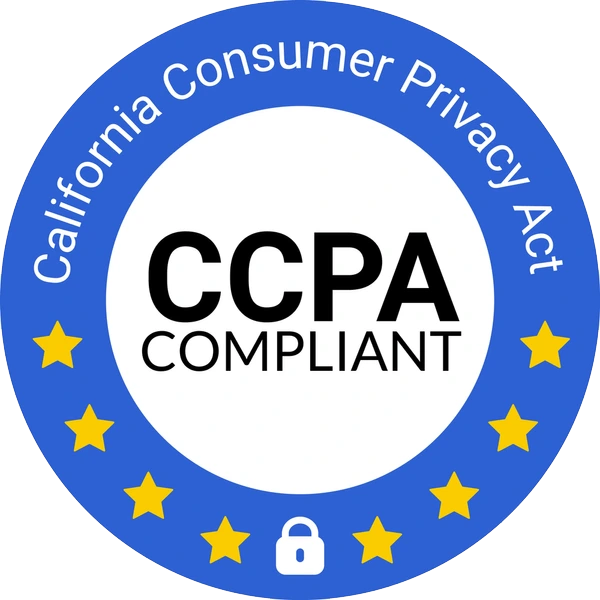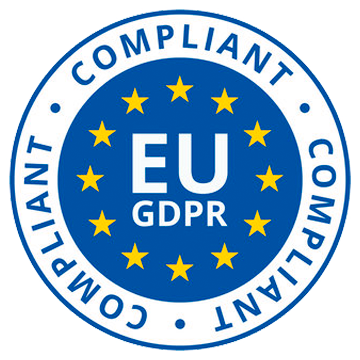Digital signature, also known as eSignature, has exploded as remote work has allowed a lot of companies to move to paperless systems. Many organizations let users electronically sign documents. This means you don’t need to print them, manually sign them, and scan them back into a digital file.
While digital signatures are somewhat similar to electronic signatures, they offer more protection. Electronic signatures verify that you’ve received a document. Digital signatures secure that document so no one else can access it.
Collect legally-binding eSignatures
Upload any PDF to Sizle, get signatures and close deals effortlessly.
Trusted by 30,000+ users. No credit card needed.
What is a Digital Signature?
There is a difference between a digital signature and an electronic signature. An electronic signature is a lot like your regular signature. It’s used to sign documents online without the need to print them. It might seem like these signatures are easier to forge, but there are protections in place to prevent that.
While an electronic signature is a digital version of your signature, a digital signature is not just another term for an electronic signature. The terms are often used interchangeably online, but it’s not as simple as that.
You might understand digital signatures when they’re compared to your fingerprints. They are unique identities assigned to you alone using a public key infrastructure (PKI). Companies use PKI to encrypt documents so only specific users can access them securely.
A PKI certification is like a digital driver’s license software uses to ensure you are who you say you are. Websites use PKI in the form of SSL certificates to show users that they own the domain and are protecting the information your computer is sending, and vice versa.
This means you can feel safe when you visit a site with an SSL certificate. They won’t allow viruses to reach your computer, and they’ll protect and encrypt private data your network sends to them.
Digital signatures are more secure than electronic signatures. They encrypt the document and embed information into the file. If an unauthorized user manages to open the document, the program removes the digital signature. Anyone else looking at the document will see that it wasn’t signed.
Digital signatures protect both the sender and the signer. They basically lock the document so no one can change the contents and argue that they weren’t given certain information.
Using a digital signature on a document also ensures that you, and only you, signed the document. Every user has a unique digital signature that you link to your identity, so other people with access can see who has signed the document.
Why should you use a Digital Signature?
Digital signatures have many practical applications. You can use it to sign employment documents and invoices to complete work online. You can attach it to encrypted emails to ensure the privacy of the contents. Secure online transactions often call for digital signatures to protect personal data. If you file your income tax online, you use a digital signature to verify your identity to the IRS. You can also use digital signatures to validate PDFs or Word documents.
On a broader scale, digital signatures benefit companies that send documents to people all around the world. It’s a paperless way to efficiently track files and ensure there’s no duplication or deceit.
Because digital signatures are paperless, there’s a faster turnaround time for documents. The private keys linked to your digital signature allow you to sign a document with a single click. The receiver can verify your identity easily and mark the document as complete.
Since you link your digital signature to your identity, you can use it on a computer, tablet, or smartphone. This eliminates the need to find a desktop computer and printer to print, sign, scan, and return documents. You’ll always have your digital signature at your fingertips.
When you request that clients and employees use digital signatures on documents, you’re cutting down on storage space. You won’t need to cram your office with filing cabinets because all of your essential documents are digital files.
You can save files on your desktop and back them up on an external drive to ensure you’ll always have everything you need on hand. When you use Sizle to create digital signatures, you’ll have the option to store documents in secure document workspaces. You can also link it to Dropbox or Google Drive for more storage solutions.
Digital signatures don’t just save time and paper. They also cut down on costs. You don’t have to pay to print and mail documents to others. You’re able to send documents through email or Sizle and get immediate responses. Sending documents online that users can digitally sign also makes everything more efficient. You don’t have to make notes about when you mailed documents or sent things in certified mail so that you have proof of receipt. You can click to add a read receipt to your email and get an immediate notification when your recipient opens the document.
Digital signatures are more secure than other options. While you have to prove your identity if you’re getting a document notarized, there are otherwise no safeguards in place.
Digital signatures have custom keys encrypted into the document, so you know the true identity of the signer.
This key also prevents alteration of the documents without every party’s approval. This security benefits the sender and the receiver because they’re made aware of any changes made to the document via a timestamp.
How does a Digital Signature work?
Digital signatures are a way of putting a lock on a document. It prevents unauthorized users from changing the file, intentionally or unintentionally, after someone signs it. This means you can sign a document or business proposal, return it, and feel confident that the sender won’t change the document. Companies like Sizle that provide digital signatures also encrypt the data on their end. They use a PKI not only to secure your document but ensure the recipient will universally accept it. Though digital signatures are more secure than electronic signatures, they’re still unique to each signer. No one else can forge your digital signature to a document.
Each digital signature has both a public and a private key. When you create a digital signature, you’re using your private key. But when you send it to someone else, that user gets a copy of your public key. The public key can decrypt the personal signature to ensure the right person is using it.
For example, a parent signs a document authorizing tuition payment to their child’s school. The parent created a digital signature, which has a private key linked directly to their identity. But the software sends the public key, along with the document, to the school.
The school administrator opens the document and the public key. The public key decrypts the private signature to authorize it. It tells the school that yes, the parent in question signed this document. If the public key can’t decrypt the signature, then it might mean the right parent didn’t sign it. The school can’t use it to authorize a tuition payment because it’s invalid.
A public key that cannot decrypt a signature might mean that someone changed the document after signing.
Maybe the right parent signed the document, but when the school administrator opened the file, they realized they left a zero off the tuition amount. When they add the zero, the software removes the signature. This is to protect the users. The parent authorized the amount on the invoice and digitally signed their agreement. They might not agree to the tuition increase, so it’s equivalent to a forgery to keep their signature on an altered document.
Because the school administrator has changed the invoice, the signature disappears. They must send it back to the parent and explain the circumstances to get a new digital signature on the document.
Digital signatures work beneath the surface. When the parent wanted to sign the school’s document, they created their digital signature. This creation process involves a public key and a private key. The parent signed the document with the private key and sent it back to the school. The school received the document and opened it to verify the signature. The public key, which the software created along with the private key, can decrypt the document on the school’s end.
Each digital signature includes a timestamp. The file will remember when you applied your digital signature. If the document changes after that timestamp, your digital signature is no longer valid.
Another example is with work contracts. You sign one document promising what a certain package gives a client. The client receives the document and adds in several more things they want you to do. If they added something to the document, the software removes your signature because you didn’t agree to the new information. You don’t have to worry that your signature is still attached, implying you give your approval. The instant the client tries to change the workload, your signature will disappear.
This protection should make you feel confident when signing documents. You’ll know you aren’t committing to data that the sender can change without your approval. Knowing the software invalidates your signature if the file changes are reassuring.
How to create a Digital Signature
Digital signatures are a secure and straightforward way to do business online. Using one makes everything more accessible, so learn how to make a digital signature. There are different ways to create digital signatures depending on the type of document you’re using.
Do you need to convert a Word, PPT or other kind of document to PDF?Use Sizle’s free PDF Converter for fast and free file conversion.
How to create a Digital Signature in MS Word
Word documents are often used for invoices, contracts, and other agreements that require signatures. To create a digital signature in Word, you’ll first add an electronic signature line.
- Click the cursor where you want the signature to appear.
- Go to the Insert tab and find the Signature Line in the Text group.
- Click on Microsoft Office Signature Line.
- Fill in the following information: suggested signer, suggested signer’s title, suggested signer’s email address, and any instructions for the signer.
- Select the option to show the date beside the signature.
This will make a signature line show up on the document. When your recipient opens the document, a message bar will alert them that they need to sign it.
After creating the signature line, you can add an invisible digital signature to confirm that the document is authentic.
- Go to the File tab and click on Info.
- Open Protect Document and select Add a Digital Signature.
- A Sign dialog box appears, so you need to type the purpose for signing the document.
- Click Sign to finalize the signature.
These steps make the Word document read-only so no one can modify the file. Once it’s signed, no one can tamper with the contents.
How to do a Digital Signature in Adobe
The process for a digital signature on a Word document is pretty straightforward. But if you want to know how to add a digital signature to a PDF, you’ll have to take a few more steps.
Adobe gives you the ability to create your own digital ID.
- In Adobe Acrobat, open the Edit menu.
- Choose Preferences, then Signatures.
- On the right side of the menu, you’ll see an option for More.
- That opens Identities and Trusted Certificates.
- From there, select Digital IDs.
- Click the Add ID button.
- When prompted, choose “A new digital ID I want to create now,” unless you’ve completed this process before.
- Select where to store your digital ID on your hard drive.
- Fill out the information requested: name, email, and personal data.
- Decide whether you’ll use the digital ID for signatures, data encryption, or both, then click Next.
- Create a strong password for your digital ID so hackers won’t gain access.
- Click Finish.
After you create an Adobe digital signature, you can add digital signatures to PDFs. The program saves the ID on your computer so you can access it across platforms.
Adobe has additional security measures in place. You can set timeouts for the ID that include how often you’re prompted for a password. For maximum security, you should input your password each time you digitally sign a document. If you’re the only user on your computer, you can specify an interval for how often you need to input the password. You can select the number of days, weeks, or sessions of Acrobat use.
When you download a PDF, it will automatically open in Adobe Acrobat. From there, you can navigate to the Forms and Signatures group in the Tools tab. Click on Certificates and select Digitally Sign. Drag your mouse over the signature line and choose your existing Digital ID from the Sign with a Digital ID window. A window opens that asks you to Sign as “User Name.” Click Sign and save your document.
Now you can send the document to whoever requested it. When they get the document, they can see your Digital ID information within the file. Users can verify digital signature certificates by opening the Signatures panel, selecting a signature, and clicking on the Options menu.
From there, you can clock Show Signature Properties and Show Signer’s Certificate. This will authenticate the other users’ digital signatures.
Are Digital Signatures Legally Binding?
If your digital signature matches both the public and private keys, then it is legally binding. If the document changed after you signed, then your signature isn’t valid, and you aren’t held liable. It’s the equivalent of someone tampering with a document after it was manually signed.
Any company that provides a digital signature backs it up with a PKI and a certificate authority. The certificate authority connects your identity to the PKI in a combined unique fingerprint. If a question of legality arises, the courts can access the digital data to verify that you signed it.
United States federal laws accept digital signatures as legally binding, but they’re held to similar circumstances as pen and paper signatures.
- The signer must have intended to sign the document on their own, with no coercion.
- All involved parties agreed that it’s acceptable to conduct business online, even if it was standard terms of agreement document.
- The signature needs to belong to the person who claims they signed it clearly.
- The parties kept records of the document and all related communication to prove it was all above-board.
The Uniform Electronic Transactions Act is a law that 47 states and the District of Columbia adopted to accept digital signatures. The three states that don’t follow this specific law have terms of their own regarding digital signatures.
The Electronic Signature in Global and National Commerce Act, also called ESIGN, accepts digital signatures on any business, commercial, or government paperwork. Some documents still legally require ink signatures.
Interested in learning about contract law?Check out our article on How to Become a Lawyer
Are Digital Signatures secure?
While an electronic signature is a digital version of your manual signature, a digital signature involves an encrypted certificate that is more in line with a driver’s license or passport. You can’t simply sign the document and have it legally binding. You have to prove that you are who you say you are.
Think of documents that you must sign in front of a notary. You have to prove your identity before the notary can verify your signature. Digital signatures are similar, except the notary is a digital certificate verifying your identity and encrypting it so others can’t access the file.
The digital signature certificate is what ensures your digital signature is secure. The certificate encrypts the data so that no unauthorized people can access it. It also verifies the identities of who sent the message and who signed it. It prevents anyone from changing the document throughout the entire process. On some levels, digital signatures are more secure than pen and paper. Digital encryption verifies all users’ identities, protects against unauthorized document changes and provides more data than a traditional signature.
With a digital signature, you can see where the document originated, who created it, who signed it, and when, along with if and when someone altered the document. This puts many layers of protection in place for both the sender and the signer.
How Sizle can help
Sizle is a fast, effective way to share, track and sign documents, all from one smart link. Know who’s reading, clicking and signing.
Once you send the document for eSignature, Sizle allows you to see if and when your recipient viewed the document. This helps you stay on top of deadlines and see where your business process is getting held up. Along with document tracking, Sizle provides full analytics, so you know how your clients are interacting with the files you’ve sent. Instead of constantly checking various email folders, you can view everything on one dashboard shared with your team.
Final thoughts
Digital signatures are a secure way to verify that certain users have seen and agreed to documents. The signature protects files and provides security against unauthorized changes.
Now that you know how to make a digital signature, there’s no reason not to use it on important documents. It’s legally binding and more secure than a standard electronic signature. Follow the steps to create a digital signature in Word and Adobe, so your documents are always encrypted.
You sent the file. See what happens next.
Every unread document costs you time and opportunity.
Sizle shows what really happens after you hit send, instantly and securely.
Free 7-day trial. No card required.
Unlock insights instantly.



